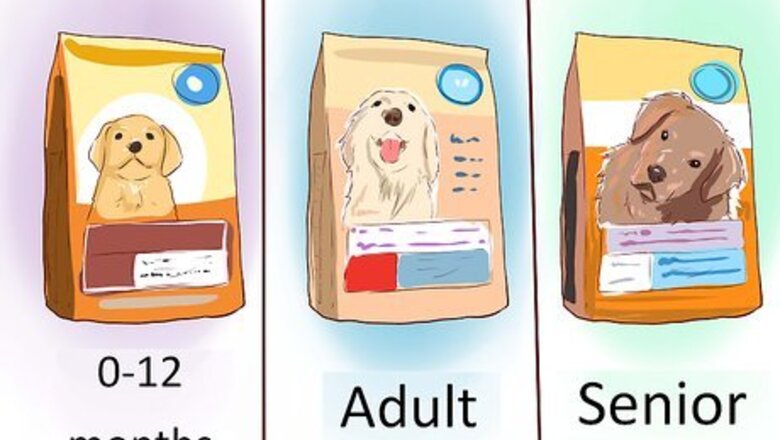
views
X
Research source
Breed Predispositions to Disease in the Canine and Feline. Gough. Publisher: Wiley-Blackwell. 2nd edition
Taking care of a toy poodle means giving your dog attention, and having the financial ability to provide for her needs such as regular grooming, health care in old age, and preventative treatments such as worming.
Feeding Your Toy Poodle
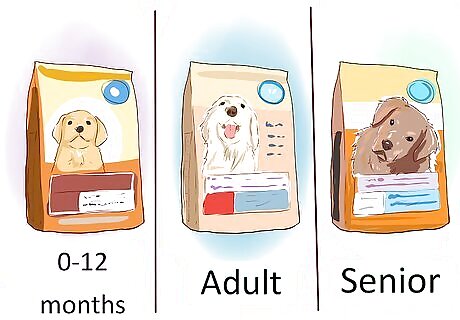
Choose a food formulated for your dog's age. Depending on their age, dogs require different levels of protein, calories and other nutrients. There are different types of dog food formulated for puppies, adult dogs and senior dogs. Puppies: Puppies need higher levels of protein for their muscles, calories for growth, and calcium for healthy bones. If your toy poodle is a puppy under 12 months of age, feed it dog food that is specially designed for puppies. These are usually labelled as "puppy food" or "growth" foods. Choose a puppy food designed for toy dogs. This is because the kibble size is smaller and easier for your puppy's tiny teeth to deal with. Adult dogs: When your dog reaches about 12 months of age, feed it food formulated for adult dogs. Keep them on this food until they are about 7 years old. These foods are nutritionally balanced to provide an adult dog's dietary needs. Senior dogs: When your adult toy poodle is 7 years and older, switch to a senior food. These contain reduced level of minerals such as phosphate that the kidney finds more difficult to process. By switching to a senior food, you can help protect your pet's renal function.
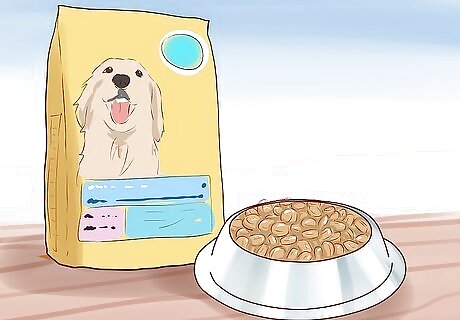
Choose a completely dry food diet. The options for feeding are a complete dry diet (often known as kibble) or a wet diet of canned food with the addition of mixer biscuits. Dry foods are healthier for the dog's teeth, because chewing on the biscuit helps keep them clean. Wet foods can be more appealing to toy breeds, but the sticky canned or pouched food does stick to teeth and encourage plaque formation. If possible, start your toy poodle pup on a complete dry diet to help promote dental health. Look for a food designed for toy breeds, which will make chewing on the kibble less troublesome.
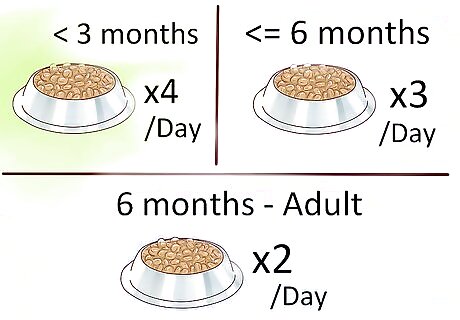
Schedule the frequency of feedings depending on your dog's age. When your dog is a puppy, it has a smaller stomach and needs to be fed more frequently than when it is an adult. Puppies: Feed your toy poodle puppy small meals frequently. The general rule is 4 meals a day up to 3 months of age; 3 meals a day up to 6 months of age; 2 meals a day from 6 months through adulthood. Adult and senior dogs: Feed your adult or senior dog 2 meals per day. Two meals is recommended because a toy poodle's small stomach capacity means he prefers to eat smaller meals more often.
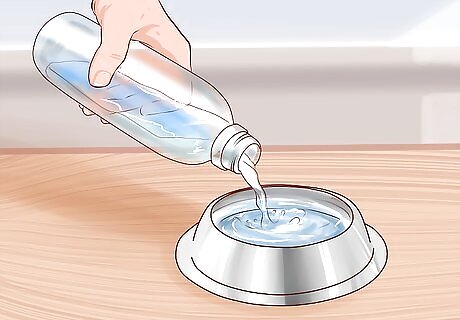
Give your dog plenty of water. Always have a bowl of water available for your dog. Refresh the water every day and clean the bowl every few days.
Grooming Your Toy Poodle
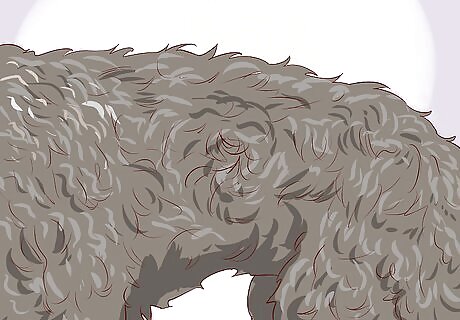
Keep your dog’s coat free from snags. Poodles have a curly wiry coat that grows continually. Poodles do not shed hair in the same way as other breeds. Their hair does fall out, but it gets tangled with the rest of the coat. This means poodles are very liable to getting knots and tangles. Puppies have a soft coat, which starts to be replaced by adult fur from about 6-9 months of age. A full changeover to the adult coat can take until the pet is 18 months old.
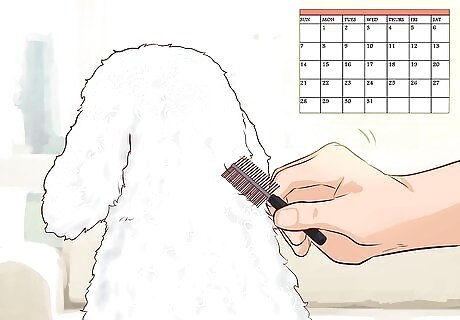
Groom your dog every day. Take a few minutes every day to groom your dog. This will serve a dual purpose: you will be able to detangle his hair and you will be giving him some much-needed attention.
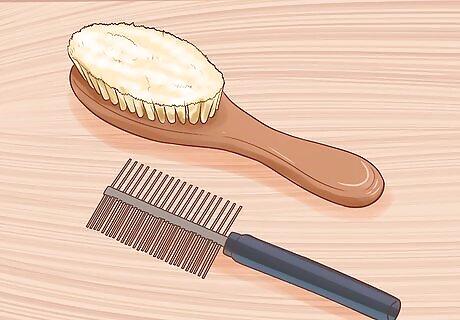
Use a comb or a stiff brush. To comb through the snags, use a comb or brush that is available at a pet store. You may also want to use both, using a comb on certain parts of the dog's body and a brush on other parts.

Spritz the dog’s coat with water. Before you start combing, spray your toy poodle’s coat with a light mist of water. This will help avoid static build-up. It can also help prevent dry hair from snagging together.
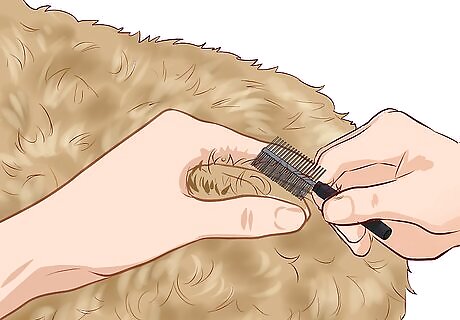
Comb section by section. Separate off a section of coat and hold it between your fingers. Comb the coat by brushing from root to tip. Groom the entire coat and be sure to comb behind the ears and under the tummy.

Clip your dog’s hair every 3-8 weeks. A toy poodle’s hair grows all the time, so keeping it tidy requires clipping. Depending on how long or short you’d like to keep your dog’s coat, aim to get the hair clipped every 3-8 weeks. This is usually done at a dog grooming parlor, but with access to good dog clippers, some practice, and plenty of time, you can learn to clip a dog yourself.
Caring for Your Toy Poodle’s Ears
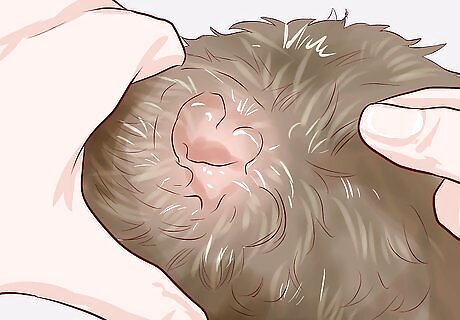
Consider plucking out your dog’s ear hair. Toy poodles have a tendency to have very hairy canals. The hair on their body extends down into the ear canal and can plug it - a bit like wearing furry ear plugs all the time. Check with your vet to determine an appropriate schedule for plucking hair. Some experts' opinions vary about whether or not to pluck this hair. The argument for hair plucking is that is allows better air circulation and thus reduces the chances of ear infections, and that it removes hair that can trap earwax. Some argue, however, that hair plucking can leave your dog's ears sore and inflamed.

Monitor the ears for problems. Keep a close eye on your dog’s ears, especially if you do not pluck the hair. Be vigilant for ear infections (characterized by a bad smell, thick black wax, or discharge from the ear), or a foreign object in the ear (constantly scratching the ear, or holding the head to one side).

Visit your vet if you see a problem. If you notice signs that your dog has a problem with his ear, ask your vet to check for a health problem. They may advise you whether to pluck the ear hair more or less often.
Caring for Your Toy Poodle’s Teeth
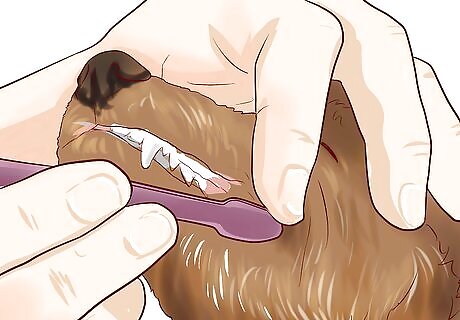
Use a child’s toothbrush on your dog’s teeth. Toy poodles are notorious for developing dental tartar. This buildup can cause smelly breath and promotes gum recession and tooth loss. To brush his teeth, use a soft child's toothbrush. You can also use a finger brush, which is available from your vet or a major pet retailer). You can reduce dental tartar buildup by feeding dry food to your dog. Eating wet food can create more dental problems. If your dog eats wet food, get into the habit of brushing your dog's teeth every day.
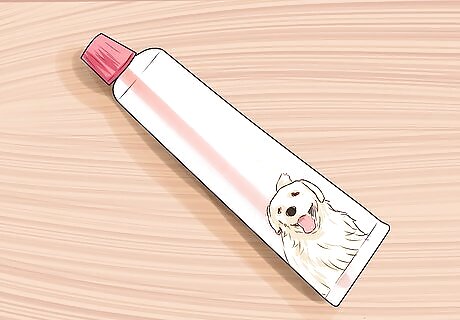
Use dog toothpaste. Toothpaste specially made for dogs can be purchased at pet stores.Never use human toothpaste on a dog. If the dog swallows toothpaste ingredients such as fluoride, he can get an upset stomach.
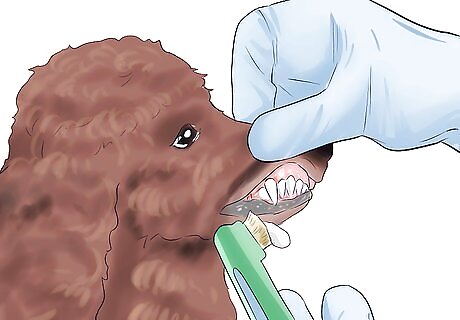
Gently brush the outside surface of the teeth. Use a small amount of toothpaste on the toothbrush. Position the dog’s head so that you can brush his teeth.
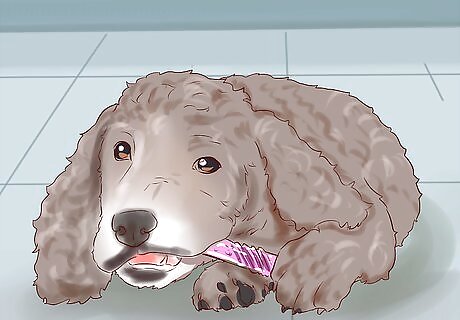
Give your dog a dental chew every day. If your dog is does not let you brush his teeth, give him a dental chew daily. This helps clean the chewing teeth (the molars) at the back of the mouth. It is worth investing time and effort into keeping your pet's teeth clean in order to reduce the number of dental cleanings your pet may need.
Monitoring Your Toy Poodle’s Health
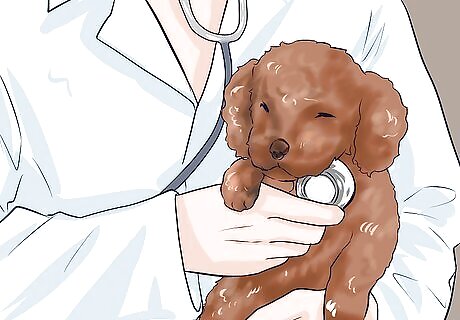
Take younger dogs to the vet annually. Monitoring your dog’s health rests in part with making regular visits to the veterinarian. For dogs under the age of 7 years, visit your vet every year. The vet will check for signs of illness, keep them up to date on vaccines, and will treat your dog for parasites and worms.
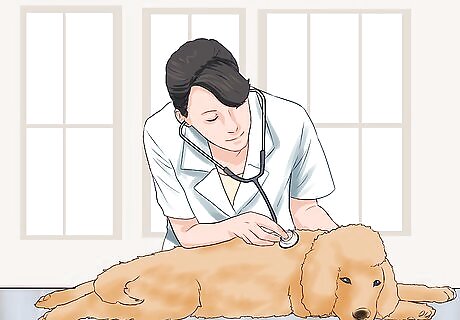
Take aging dogs to the vet every 6 months. Dogs that are over the age of 7 years should visit the vet every 6 months. The vet will check for signs of illness, keep them up to date on vaccines, and will treat for parasites and worms.
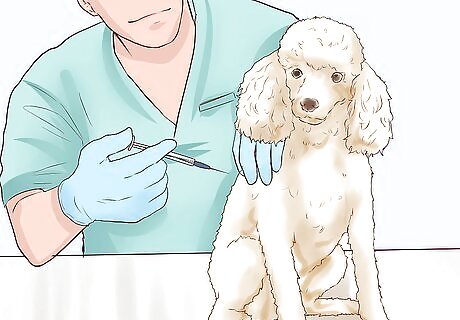
Get your dog vaccinated, wormed and treated for parasites. Responsible dog owners get their pets vaccinated regularly, wormed, and treated for parasites such as fleas. Vaccination is essential even if you carry your toy poodle everywhere, or he rarely goes outside. This is because some infections such as parvovirus are caused by particularly hardy viruses that can attach to your shoes. Therefore, they can still pose a risk to even the most pampered of poodles. Talk with your vet about implanting a microchip in your dog. A microchip will help you track the dog if he gets lost.
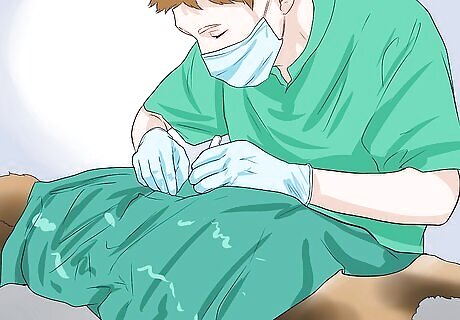
Spay a female toy poodle. One of the health problems that toy poodles are prone to in later life is diabetes mellitus (sugar diabetes). The hormones associated with estrous (heat) in the female can trigger diabetes. Therefore, it is wise to get your female toy poodle spayed. If spaying is done before the female’s second heat, this also has a beneficial effect in vastly reducing her risk of developing mammary cancer in later life. Toy poodles often live into their teens. Each time a bitch has a season, it weakens the lining of her womb and makes her more likely to develop a pyometra, which is a potentially life-threatening womb infection. Thus, spaying whilst she is fit and strong removes the possibility of needing emergency surgery in later life when anesthesia can pose a higher risk. Neutering a male toy poodle does not give the same compelling health benefits. Neutering a male is mainly done to prevent unwanted breeding and to control behavioral issues such as aggression or dominance. Talk with your vet to learn more. Discussing your dog’s health with your vet will give you a good idea about which direction to take.
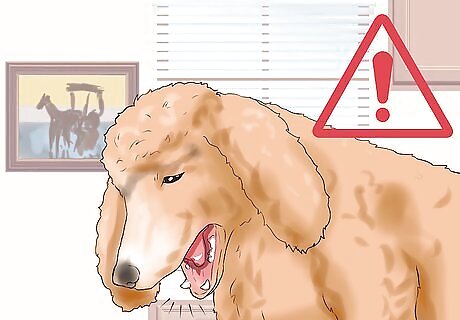
Monitor your aging dog for illnesses. Small but resilient, toy poodles often live well into double figures. They do however tend to suffer from health issues as they age. Diabetes, poor teeth and heart disease are most common. These issues, once identified, can often be managed in order to help your pet live a long and active life. Watch for signs that indicate a problem, such as increased thirst, urinary accidents, coughing, lack of energy, bad breath, difficulty chewing, or weight loss. If you see any of these symptoms, speak to your vet.
Training Your Toy Poodle
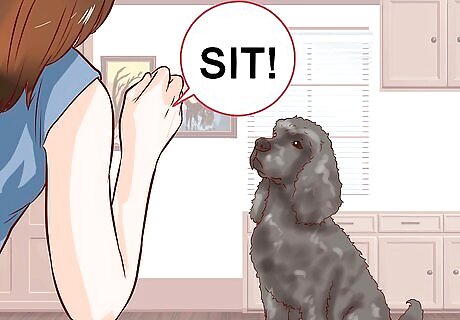
Train your dog to sit and stay. Toy poodles are highly intelligent and love the mental stimulation of dog training. Every time you feed your dog, give him commands to sit and stay before putting his food dish down. Once he sits and stays, then put the dish down. Saying these commands every time will soon train the dog to sit and stay without the added reward of food.

Train your dog to come when called. When you are at home, spend at least a couple of minutes every hour teaching your puppy his name. Do this by calling his name. When he responds and runs to you, repeat his name and then give him a treat.
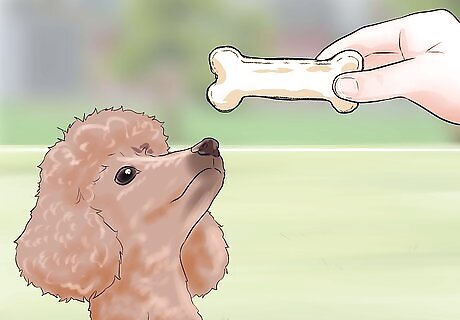
Give rewards for good behavior. All training should be reward-based, which means ignoring bad behavior and rewarding the good. Do not be tempted to scold your puppy because your attention is a reward in itself. Instead, ignore the bad behavior and encourage him to do something good. For example, call him to you and when he comes, give him a treat.
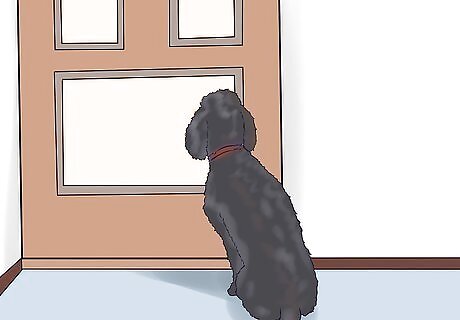
Train your dog to spend time on his own. Toy poodles become very bonded to their owner and can suffer from separation anxiety when left alone. To prevent this, train your puppy to spend time on his own at an early age. This can be something simple like leaving him in his crate for ten minutes while you stay in another room, or get him used to being home alone while you go out to run errands.
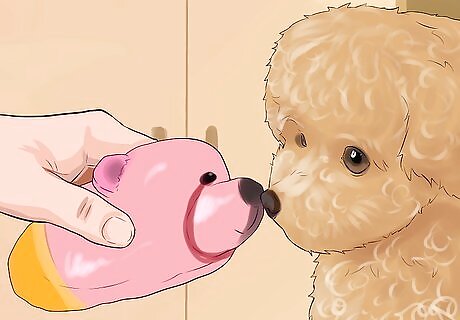
Play with your dog every day. Toy poodles thrive on mental stimulation, so put aside at least 20 minutes twice a day to play with your dog. Give your dog some dog puzzles to keep him occupied. These are available in major pet retailers or online). Many toy poodles will enjoy pursuits such as agility training on circuits adapted to small breeds.




















Comments
0 comment